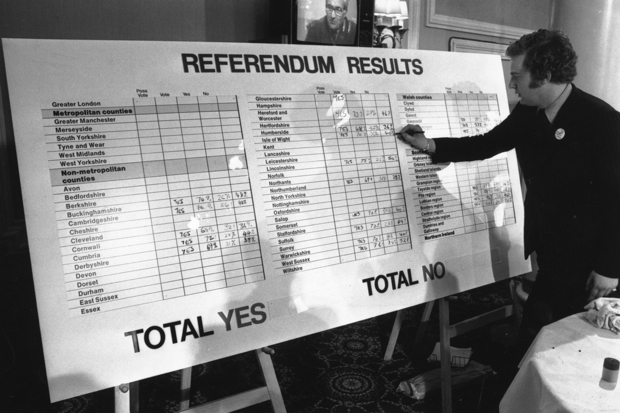The Government spent over £9m on a pro-EU leaflet to be distributed to every household before the official campaign began, backed up by a major social media campaign. This is deeply unfair. But it’s no surprise to me. I’ve seen it all before, running up to the 1975 referendum, when I was the National Agent for the campaign for leaving what was then the Common Market.
In 1975 there were three leaflets delivered to all households. One was from the National Referendum Campaign, who wanted the UK to come out. One was from Britain in Europe, who wanted us to stay in. The third was from the government, backing up the Britain in Europe case. This was deeply unfair.
To be worthwhile, referendums have to be conducted equitably. This certainly was not what happened in 1975. We were deluged by propaganda heavily weighted in favour of the stay-in campaign. The total expenditure spending on advertising, leaflets, posters and all the other elements of the campaigns conducted on each side was roughly 10:1 in favour of staying in. This had a massive effect on public opinion and can’t have failed to have had a significant impact on the result.
Referendums have to be held sparingly and, if their results are to be respected and honoured, they must be held on a level playing field if those who are on the losing side are to accept the results. Loading the dice by allowing one side of the argument to spend far more than the other – as happened in 1975 – was so transparently unfair that lessons have been learnt and better arrangements are now supposed to be in place.
Giving an unfair marketing advantage to one side has a significant impact on the final result. Take, for example, the 1975 referendum. In the autumn of 1974, only 36 per cent of the population thought membership of the Common Market was ‘a good thing’. But by 1975, this figure had shot up to 50 per cent. It is very hard to believe that this huge increase in support for staying in was not largely down to the massive and disproportionate propaganda campaign waged by the pro-Common Market campaign.
It is for this very reason that the 2015 referendum is going to be conducted with much tighter expenditure controls on both the Remain and Leave campaigns. What is the government then doing by spending taxpayers’ money on one-sided propaganda released before the official campaign began on a scale which is intended, totally disproportionately, to favour the Remain camp?
The government says that it is in favour of staying in and that it is therefore entitled to tell the public why it thinks this by using leaflet distributions and social media to explain its position. True, perhaps, if the contents of what is being distributed were factual. But that isn’t the case. The material is loaded with judgements and innuendo, which was just what happened during the 1975 referendum. These sorts of arguments ought to be the remit of the Remain and Leave campaigns and not put out in official documents. It is not the government’s job to use public resources to pursue an entirely political agenda.
No-one knows now what the result of this year’s EU referendum will be, but the polls suggest that it may be close. The government is not doing themselves a favour by making the whole referendum process unfair. It undermines the whole exercise, and will only contribute to the feeling that the result – if the public votes to stay – is flagrantly flawed.
John Mills is a Labour donor and deputy chair of Vote Leave






Comments